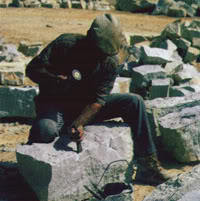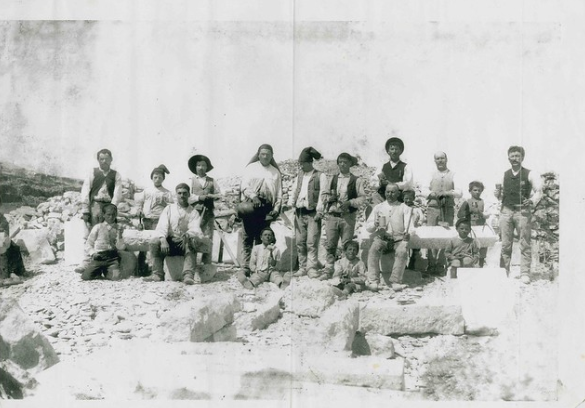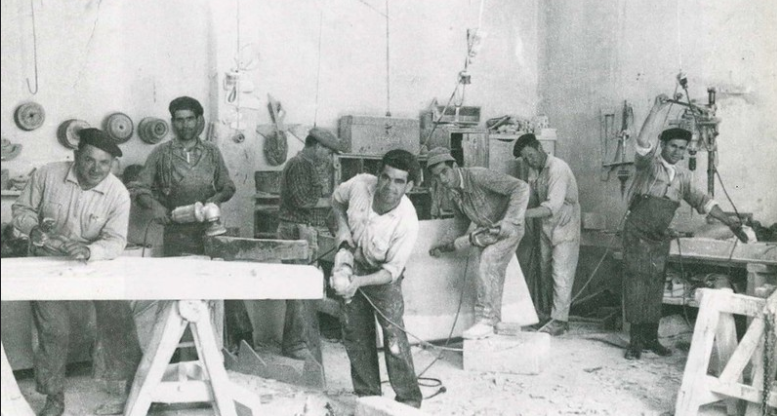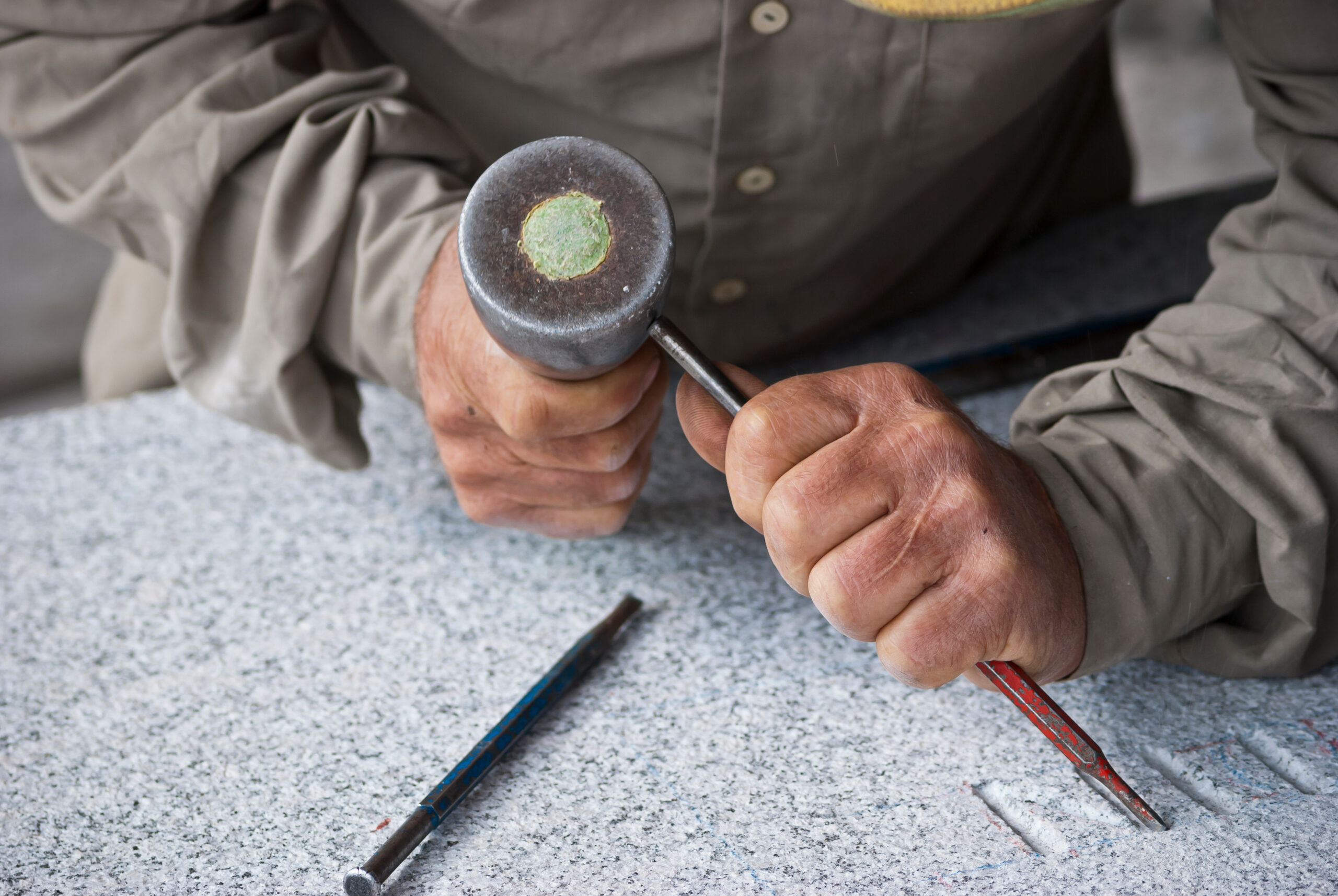One of the oldest professions in the ornamental stone sector is the stonemason. The stonemason’s trade/art is stonemasonry, which aims to carve rough blocks of stone in order to sculpt them for the intended purpose for use in construction, sculpture and decoration. It used to be a profession handed down from generation to generation, but nowadays the tradition is falling away.

Figure 1: Construction site to be used with scope and mallet Source: Cascais City Council
In the past there were quarries and processing workshops. In the quarries, they cut the stone by putting wooden wedges or gunpowder through holes. In the processing workshop, the stonemason used tools such as a scope, mallet and clapper to carve/shape the stone.

Figure 2: Flowerbeds in the Tires Quarry, 1940 Source: Cascais Town Hall

Figure 3: Construction sites at the Transformation Factory in Tires, 1940 | Source: Cascais City Council
Nowadays a stonemason uses increasingly automated tools, although some procedures are manual, such as sponging or scouring the stone. The stonemason finishes a job previously cut by automated machines, but at the moment it is an art that is losing its continuity due to the lack of apprentices and the automation of production processes.
Did you know that there is a Stonemason’s Museum? Located in Castelo Branco, this museum “focuses on the profession of stonemason, showing the objects used in both the stone extraction and processing processes. It also features photographic panels depicting the socio-economic component of the stonemason’s profession, as well as various pieces of stonework.” (Guide to the Center’s Museums and Museum Spaces).
Video 1 and 2: Builders/finishers at Manuel & Cardoso
Sources:
http://roteiromuseus.ccdrc.pt/museu_fichaGeo.aspx?idMuseu=250&tipologia=5®iao=169


